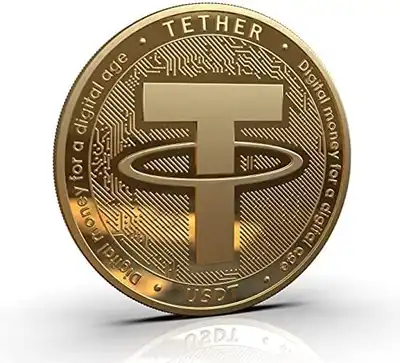Tether (USDT) is a type of cryptocurrency known as a stablecoin that was introduced in 2014. It is designed to maintain a stable value by pegging its price to a traditional fiat currency, usually the US dollar. The primary purpose of Tether is to provide users with a digital asset that can be used as a store of value and medium of exchange, while also enjoying the price stability of a fiat currency. This stability is achieved through a mechanism known as “collateralization,” where Tether tokens are backed by an equivalent amount of real-world assets, typically held in reserve accounts.
Tether has gained popularity as it allows traders and investors in the cryptocurrency market to hedge against price volatility without having to convert their holdings back into fiat currencies. It enables seamless movement between digital and traditional financial systems, providing a bridge between the two worlds. As a result, Tether has become one of the most widely used stablecoins in the crypto space and is commonly used as a base trading pair on cryptocurrency exchanges.
However, Tether has faced scrutiny and controversy due to concerns about its actual reserves, regulatory issues, and transparency. Some critics have raised questions about the full backing of Tether tokens and the lack of regular audits to verify the assets held in reserve. These concerns have led to ongoing investigations and debates in the cryptocurrency community about the stability and reliability of Tether as a stablecoin. Despite the controversies, Tether’s prominence in the cryptocurrency market has persisted, and it remains a crucial part of the digital asset ecosystem for many traders and investors.

- Introduction to Stablecoins
- What is Tether (USDT)?
- Technology Behind Tether
- Use Cases of Tether
- Advantages and Risks of Tether
- Tether Wallets and Security
- Tether in Trading and DeFi
- Future Trends and Developments
Q2: How does Tether maintain price stability?
A2: Tether achieves price stability by collateralization, where each Tether token is backed by an equivalent amount of real-world assets, usually held in reserve accounts.
Q3: Why is Tether considered a stablecoin?
A3: Tether is considered a stablecoin because its value is designed to remain relatively constant and avoid the price volatility typical of many other cryptocurrencies.
Q4: What is the primary purpose of Tether in the cryptocurrency market?
A4: Tether serves as a means of hedging against price volatility for traders and investors in the cryptocurrency market, allowing them to retain the benefits of a digital asset while enjoying the stability of fiat currencies.
Q5: Is Tether widely used in the cryptocurrency space?
A5: Yes, Tether is one of the most widely used stablecoins in the cryptocurrency market and is commonly used as a base trading pair on cryptocurrency exchanges.
Q6: How is the value of Tether maintained at parity with the US dollar?
A6: Tether Limited, the company behind Tether, claims to maintain a one-to-one backing of each Tether token with a corresponding US dollar held in reserve.
Q7: What are some concerns raised about Tether’s operations?
A7: There have been concerns about the transparency of Tether’s reserves, with some critics questioning whether the company holds enough fiat currency to back all the circulating Tether tokens.
Q8: Has Tether faced regulatory challenges?
A8: Yes, Tether has faced regulatory scrutiny and legal challenges, particularly related to the adequacy of its reserves and transparency.
Q9: Are regular audits performed on Tether’s reserves?
A9: Tether has faced criticism for not conducting regular and independent audits of its reserves, which has contributed to doubts about the actual backing of its tokens.
Q10: Despite controversies, why is Tether still widely used?
A10: Tether’s wide usage stems from its convenience as a stable trading pair and its role in providing liquidity and stability in the cryptocurrency market, making it a crucial tool for many traders and investors.




